Chickens can cohabitate with other household pets and farm animals as long as proper introductions are made. Dogs and cats in particular need special consideration before meeting your flock due to their innate predatory drives. But, with some careful preparation, your other family pets can enjoy the presence of your chickens.
What types of pets can I keep with chickens?
Several different types of pets can be kept with chickens. Chickens can share a space with:
- Ducks and other fowl
- Rabbits
- Barnyard animals
You can also introduce your flock to your household pets like dogs and cats. Once they’re acquainted, your pets can roam freely together, which is truly a sight to behold.
Introducing other pets to your chickens
Slow and steady is the best method to let your other pets greet your flock of chickens. Always allow at least a week for your chickens to adjust to their new surroundings before introducing them to your other pets. And, keep in mind that chickens are prey animals, so their instinctive reaction to perceived threats is to squawk and run. This can incite a predator response in some pets, which can create a dangerous situation for your hens. By introducing your pets slowly and in controlled settings, you’ll be able to mitigate this risk and get off on the right foot.
Chickens with dogs
Well-trained dogs are the easiest pets to introduce to your flock. Their ability and willingness to listen to your commands are instrumental in a successful flock meet-and-greet. Allow your dog to view your chickens from afar for a few days – either separated by a window or a fence. This will allow your chickens to settle into their new home, and let your dog get used to their sights and sounds.
Use a leash the first few times your dog meets with your flock. Allow them to sniff them through the safety of a chicken run. Always reward your dog with their favorite snack, toy, or some good-dog scratches.
After a few successful and laid-back meetings, you can let your dog explore your chickens’ area off-leash. Never leave your chickens unattended until you are absolutely sure that your dog does not pose a threat to them. And, free-range chickens should always be monitored while your other pets are outside with them.
Chickens with cats
Cats pose a little more of a challenge around chickens. While cats can be trained, their personalities make them independent and more prone to a hunting mentality. One of the best ways to let your cats get used to your chickens is by placing a catio next to your chickens’ run.
If you don’t have enough space for a catio next to your chicken run, let them view your flock from a window. You may notice your cat “chattering” at your chickens, or displaying other predatory behaviors. Strive to keep your cats indoors until they aren’t as interested in your flock’s activities.
Cats don’t commonly attack chickens, but they may be tempted to pounce on them, which can harm or severely stress your hens. Large-breed chickens are the best choice if your flock will be sharing a space with cats, as your felines will be less likely to test their luck with larger birds.
Chickens with ducks and other birds
Chickens and ducks can be kept together, but it’s very important that all of your ducks are females (hens). Male ducks, or drakes, are much too aggressive with chickens and will harm or even kill them. And, to house ducks and chickens together, you’ll want to make sure there are a few modifications in place.
Ducks roost and lay their eggs on the ground, so they will need a ground-level hen house to bed down in. They won’t be able to use roosting bars or racks, so any within your ducks’ reach will need to be removed. Ducks will also play and try to climb in open-top waterers, which will spill or soil your hens’ drinking water. Placing a shallow wading pool in your ducks’ area will help them satisfy their need to splash.
You can also use walk in chicken run partitions to create dedicated areas for the different birds you keep. In addition to ducks, chickens can safely share either communal or divided runs with:
- Turkeys
- Quail
- Pigeons
- Pheasants
Chickens with rabbits
Rabbits and chickens can live together, but they’ll need their own spaces to retreat to for meals and bedtime. Keeping your bunnies in a rabbit hutch with access to your chickens’ run is the best way to see that they cohabitate peacefully. Or, use walk in chicken run partitions to create a space just for your rabbits along with your chickens, but bear in mind that rabbits burrow and are likely to dig into the chickens’ area.
Zippi rabbit tunnels can be used to connect your rabbits’ run to your chickens’. Your chickens will be too large to use the tunnels, allowing your rabbits to go back and forth at their leisure. This separated space is important because rabbits and chickens have different diets. Keep your chickens’ feed elevated on their run, out of your rabbits’ reach, and keep your rabbits’ feed in their area, away from your flock.
Chickens with barnyard animals
The same methods apply when keeping your chickens with other barnyard animals. Some species that mix well with chickens include:
- Goats
- Sheep
- Horses and donkeys
- Pigs
These animals have dietary requirements similar to chickens, so all-stock pellets, fresh kitchen scraps, and scratch grains can be fed to your barnyard pets. However, your flock will still need their own chicken coop and protected access to layer feed to ensure they get the proper nutrition to produce eggs.
Omlet and your pets
No matter how many different species you keep with your chickens, we have what you need to support each one individually and as honorary members of your chicken flock. From catios and dog leashes, to rabbit hutches and ground-level hen houses, our expertly designed pet products will keep your menagerie healthy and happy. Experience the unique joy that comes from watching several species live together in harmony when you choose our products for their safety and care.


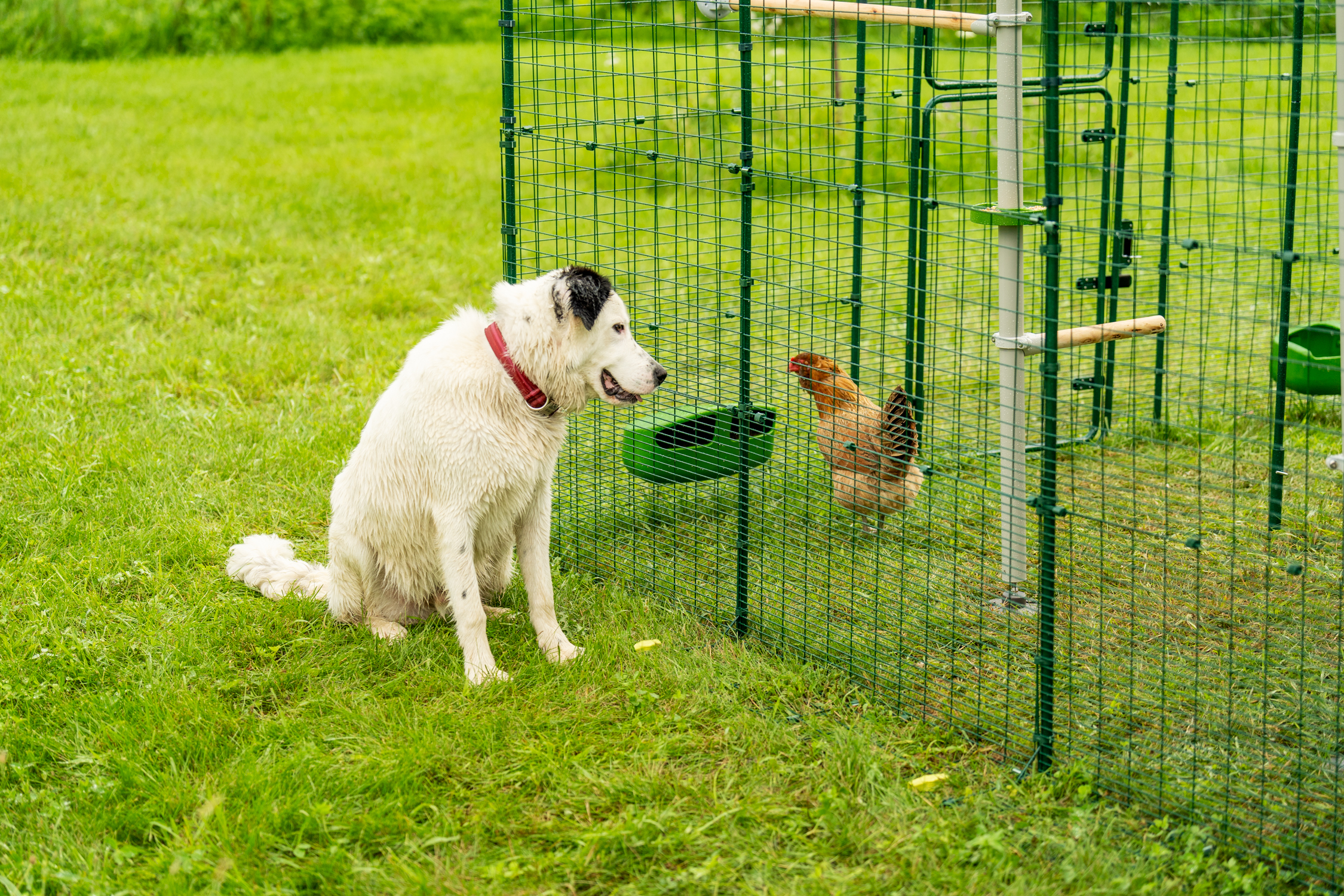


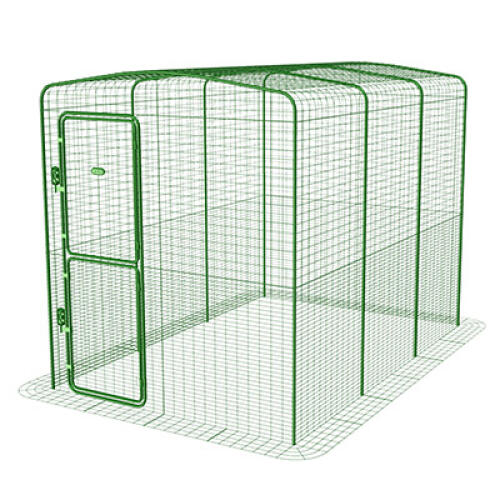
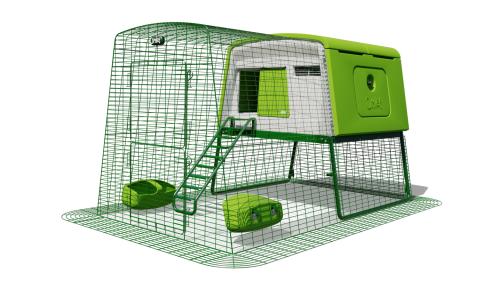
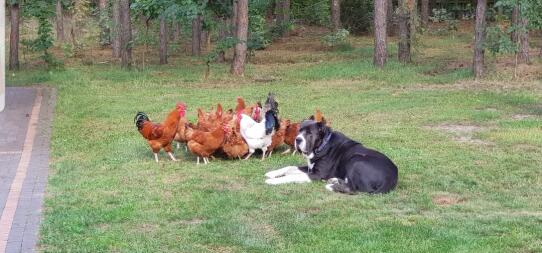
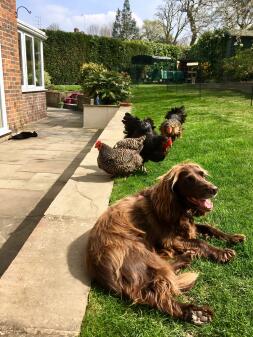
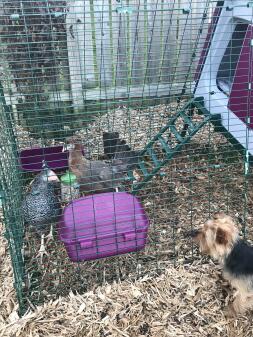
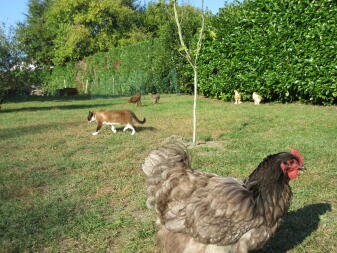
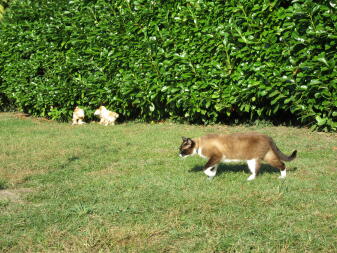
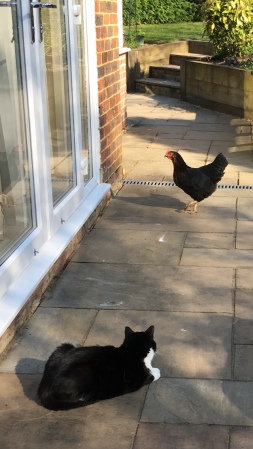
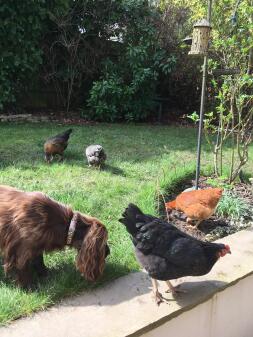
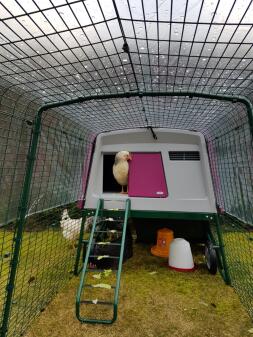
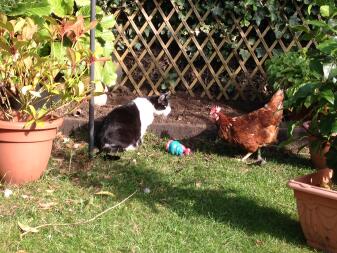
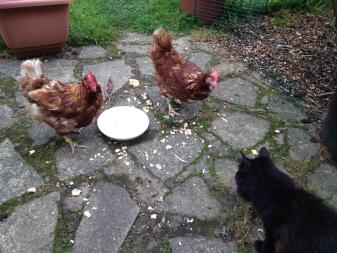
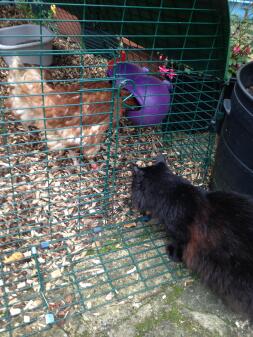
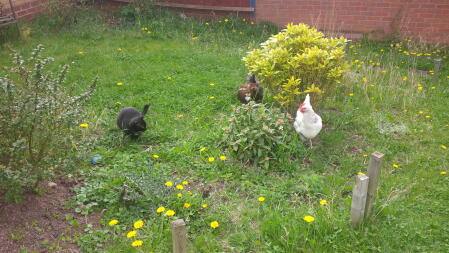
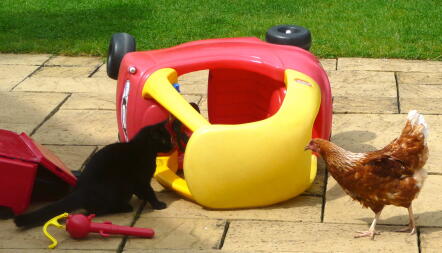
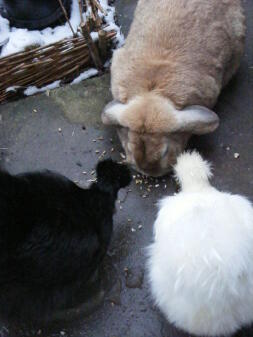
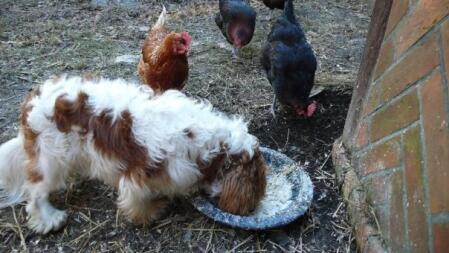
Comments
Paula, 18 April 2019
Hi there, has anyone had any experience of the hen hormone implant? Thanks in advance
Bhav, 11 November 2012
I started out by putting a long string on my dog's collar and grabbing/stomping on it if he was getting too excited around the chickens (often because he loved sniffing their bums!) . Eventually, I saw that the chickens readily pecked him to ward him off and sometimes did this so violently that it was my dog who needed rescuing!!
Linda, 16 February 2012
Thank you for the advice I am adopting some chickens soon and I have a dog and cat so I needed the advice you are giving.